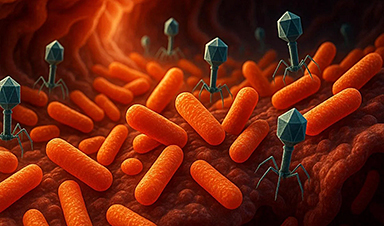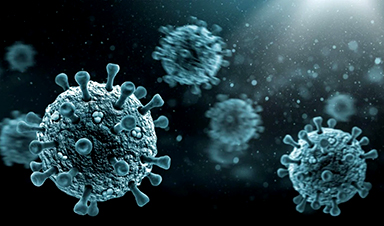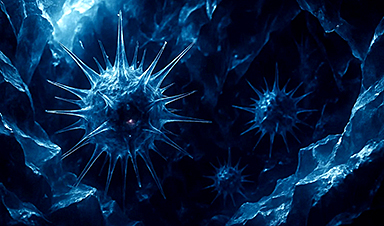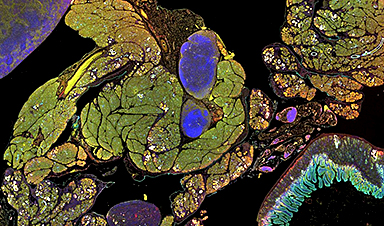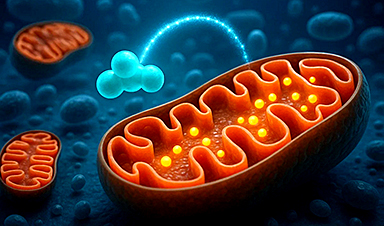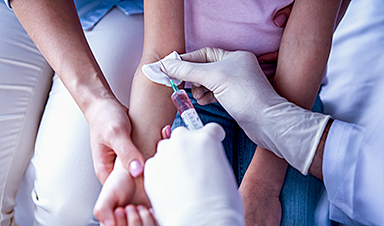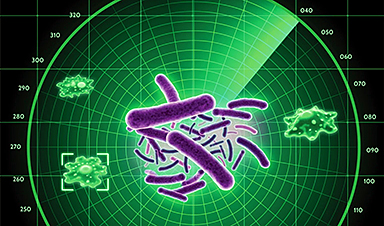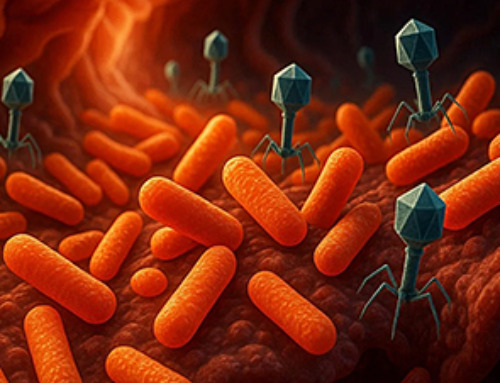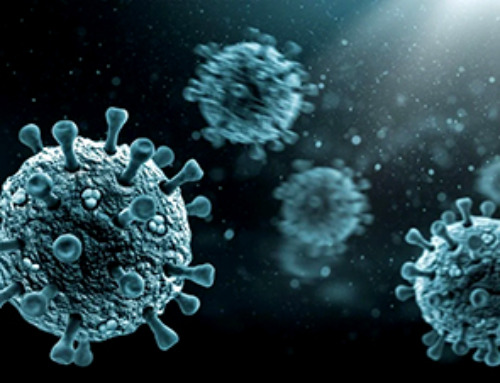- Research has found a significant fall in levels of antibodies against SARS-CoV-2, the virus that causes COVID-19, 6 months after the second dose of the Pfizer-BioNTech vaccine.
- Clinical evidence also suggests that the risk of getting a “breakthrough” infection gradually increases in the months after vaccination.
- Despite declines in antibody levels, other branches of the adaptive immune system appear to provide strong protection against severe infection and death.
- However, booster shots could protect the most vulnerable individuals, reduce transmission, and help suppress the emergence of new strains.
In the United States, the Food and Drug Administration (FDA)Trusted Source has approved third doses, or “boosters,” of the Pfizer-BioNTech COVID-19 vaccine for people over the age of 65 years.
It also approved boosters for people with health conditions that put them at risk of severe COVID-19 and for people whose jobs expose them to a high risk of infection, including healthcare workers and teachers.
The agency had already givenTrusted Source the green light to boosters for individuals with severely weakened immune systems, such as organ transplant patients.
But is there any evidence to justify a more widespread rollout of booster shots in the general population?
A recent study found that serum levels of antibodies against the spike protein of the virus, which it uses to gain entry to cells, start to wane around 12 weeks after the second dose of the Pfizer vaccine.
The researchers discovered that by 6 months after the second dose, median levels of these antibodies had fallen to around 7% of their peak level, with a range of 2–25%. The researchers say that this decline is expected.
Other workTrusted Source has shown that after having an mRNA-based vaccine against SARS-CoV-2, antibodies may not be circulating, but they are at peak activity within the lymph nodes by 12 weeks.
Cells that remember
At first glance, this appears to represent a worrying loss of immunity, but antibodies are only one branch of the body’s adaptive immune system.
The adaptive immune system also includes cells that remember past infections or vaccinations and swing into action if they encounter the same infectious agent again.
A recent preprint of a study reports that the number of immune cells known as memory B cells that recognize the virus actually increases 3–6 months after the second dose of the Pfizer or Moderna vaccine.
Remarkably, even though these vaccines use genetic material from the original variant of the virus, the B cells also recognized the Alpha, Beta, and Delta variants.
This is because the precursors of these B cells evolve over time in the body through a process of random mutation, which allows the mature cells to detect new variants of the virus as they arise.
The research also found two other types of immune cell primed to detect the virus in most individuals 6 months after their second dose of vaccine.
Known as helper T cells (CD4+ cells) and killer T cells (CD8+ cells), these help ramp up the immune response and destroy infected cells, respectively…
News
Scientists Flip a Gut Virus “Kill Switch” – Expose a Hidden Threat in Antibiotic Treatment
Scientists have long known that bacteriophages, viruses that infect bacteria, live in our gut, but exactly what they do has remained elusive. Researchers developed a clever mouse model that can temporarily eliminate these phages [...]
Enhanced Antibacterial Polylactic Acid-Curcumin Nanofibers for Wound Dressing
Background Wound healing is a complex physiological process that can be compromised by infection and impaired tissue regeneration. Conventional dressings, typically made from natural fibers such as cotton or linen, offer limited functionality. Nanofiber [...]
Global Nanomaterial Regulation: A Country-by-Country Comparison
Nanomaterials are materials with at least one dimension smaller than 100 nanometres (about 100,000 times thinner than a human hair). Because of their tiny size, they have unique properties that can be useful in [...]
Pandemic Potential: Scientists Discover 3 Hotspots of Deadly Emerging Disease in the US
Virginia Tech researchers discovered six new rodent carriers of hantavirus and identified U.S. hotspots, highlighting the virus’s adaptability and the impact of climate and ecology on its spread. Hantavirus recently drew public attention following reports [...]
Studies detail high rates of long COVID among healthcare, dental workers
Researchers have estimated approximately 8% of Americas have ever experienced long COVID, or lasting symptoms, following an acute COVID-19 infection. Now two recent international studies suggest that the percentage is much higher among healthcare workers [...]
Melting Arctic Ice May Unleash Ancient Deadly Diseases, Scientists Warn
Melting Arctic ice increases human and animal interactions, raising the risk of infectious disease spread. Researchers urge early intervention and surveillance. Climate change is opening new pathways for the spread of infectious diseases such [...]
Scientists May Have Found a Secret Weapon To Stop Pancreatic Cancer Before It Starts
Researchers at Cold Spring Harbor Laboratory have found that blocking the FGFR2 and EGFR genes can stop early-stage pancreatic cancer from progressing, offering a promising path toward prevention. Pancreatic cancer is expected to become [...]
Breakthrough Drug Restores Vision: Researchers Successfully Reverse Retinal Damage
Blocking the PROX1 protein allowed KAIST researchers to regenerate damaged retinas and restore vision in mice. Vision is one of the most important human senses, yet more than 300 million people around the world are at [...]
Differentiating cancerous and healthy cells through motion analysis
Researchers from Tokyo Metropolitan University have found that the motion of unlabeled cells can be used to tell whether they are cancerous or healthy. They observed malignant fibrosarcoma [...]
This Tiny Cellular Gate Could Be the Key to Curing Cancer – And Regrowing Hair
After more than five decades of mystery, scientists have finally unveiled the detailed structure and function of a long-theorized molecular machine in our mitochondria — the mitochondrial pyruvate carrier. This microscopic gatekeeper controls how [...]
Unlocking Vision’s Secrets: Researchers Reveal 3D Structure of Key Eye Protein
Researchers have uncovered the 3D structure of RBP3, a key protein in vision, revealing how it transports retinoids and fatty acids and how its dysfunction may lead to retinal diseases. Proteins play a critical [...]
5 Key Facts About Nanoplastics and How They Affect the Human Body
Nanoplastics are typically defined as plastic particles smaller than 1000 nanometers. These particles are increasingly being detected in human tissues: they can bypass biological barriers, accumulate in organs, and may influence health in ways [...]
Measles Is Back: Doctors Warn of Dangerous Surge Across the U.S.
Parents are encouraged to contact their pediatrician if their child has been exposed to measles or is showing symptoms. Pediatric infectious disease experts are emphasizing the critical importance of measles vaccination, as the highly [...]
AI at the Speed of Light: How Silicon Photonics Are Reinventing Hardware
A cutting-edge AI acceleration platform powered by light rather than electricity could revolutionize how AI is trained and deployed. Using photonic integrated circuits made from advanced III-V semiconductors, researchers have developed a system that vastly [...]
A Grain of Brain, 523 Million Synapses, Most Complicated Neuroscience Experiment Ever Attempted
A team of over 150 scientists has achieved what once seemed impossible: a complete wiring and activity map of a tiny section of a mammalian brain. This feat, part of the MICrONS Project, rivals [...]
The Secret “Radar” Bacteria Use To Outsmart Their Enemies
A chemical radar allows bacteria to sense and eliminate predators. Investigating how microorganisms communicate deepens our understanding of the complex ecological interactions that shape our environment is an area of key focus for the [...]

